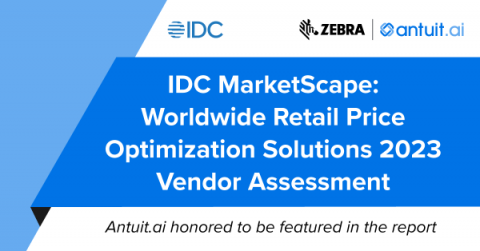Operations | Monitoring | ITSM | DevOps | Cloud
antuit.ai
Getting the Numbers Right: AI Solutions for Grocery Demand Forecasting
The grocery sector was arguably hit as hard by the pandemic as any and is still dealing with the most persistent hangover—namely ongoing supply shortages, inventory imbalances, and excessive spoilage and waste.
Retail Pricing: Time to Break Some Old Rules?
Among other reasons we’ve talked about, many retailers are looking at AI-powered pricing solutions because they feel confined by strict sets of pricing rules and policies, often put in place many years ago—long before modern data science was even a concept.
AI: How to Avoid Any Pitfalls in Applying It to Your Business
Data to Dollars
In our previous blogs, we discussed the transformative capabilities of AI in demand forecasting and planning for the retail and CPG industries, as well as the data science and ethical considerations behind it. Now, in this final installment of our series, we'll explore how businesses can maximize their margins by integrating, adopting, and executing AI-powered solutions.
Empowering the Frontline: Inside Grupo Bimbo's AI-powered Transformation
Following our well-received presentations with Walgreens’ Andy Kettlewell at this year’s NRF and RILA LINK shows, we were fortunate to present another testimonial breakout session—this time from a CPG perspective—at Gartner’s annual Supply Chain Symposium/Xpo in Orlando. One of the things I’m especially proud of since the beginning of antuit.ai is the number of customers who’ve been eager to come forward and share their positive experiences with us.
Why AI Isn't Working for Everyone
Digital code behind a digitized face Welcome back to our series with Nicholas Wegman, Ph.D., Senior Director of Artificial Intelligence and Alex Barnes, Senior Director of Product Management, as they continue to discuss the science behind Artificial Intelligence (AI) and reveal how it can specifically increase retail/CPG margin. In the second part of our three-part series, we’ll delve deeper into the data science of AI, and why it’s not working for every business.
10 Keys to Successful AI/ML Adoption & Transformation
We know that for many retailers and CPG companies, AI/ML solutions represent a game-changing technology. Yet, this journey seldom comes without a few expectable “growing pains”—from adoption and scale through a fully-fledged data-driven transformation. For multiple internal stakeholders across an organization, the end-to-end process can seem quite daunting—especially without a well-defined plan.
IDC MarketScape: Retail Pricing Optimization Solutions
Effective retail price optimization is essential for increasing profitability, driving revenue, and enhancing customer satisfaction. As we navigate through the economic aftermath of the pandemic—inflation, supply chain uncertainties, and other lingering disruptions, successful retailers are leveraging advanced, data-driven price optimization solutions.
Measuring Pricing Effectiveness: The Process (Part 2 of 2)
Deciding what metrics to measure leads to the next big issue: How to Measure. Often the problem is not so much in the measuring but in the comparison. Measuring the revenue is only useful if you can compare it to a baseline of revenue to know whether the result is good or not. Summarized, there are four basic techniques, each with advantages and disadvantages: Test and Control: Typically execute new pricing in some locations while using the legacy process in others.





